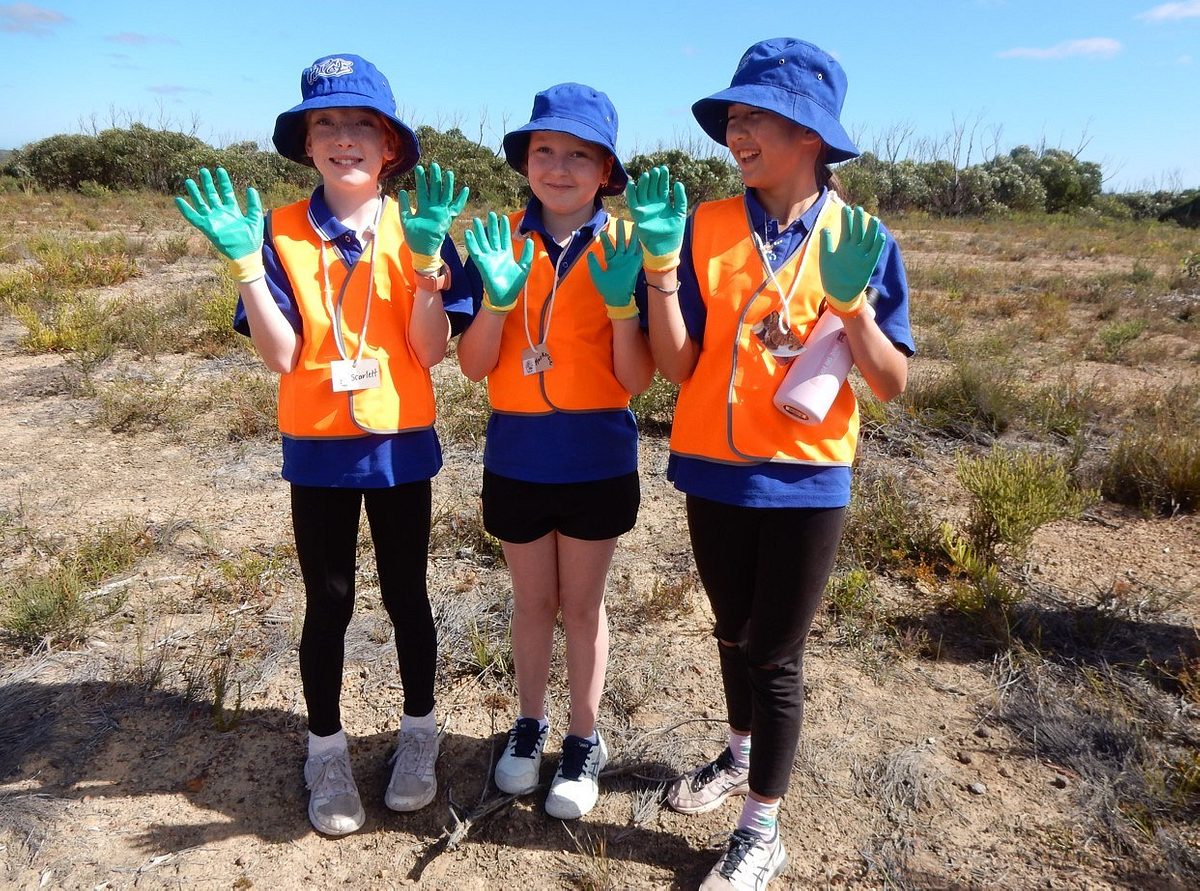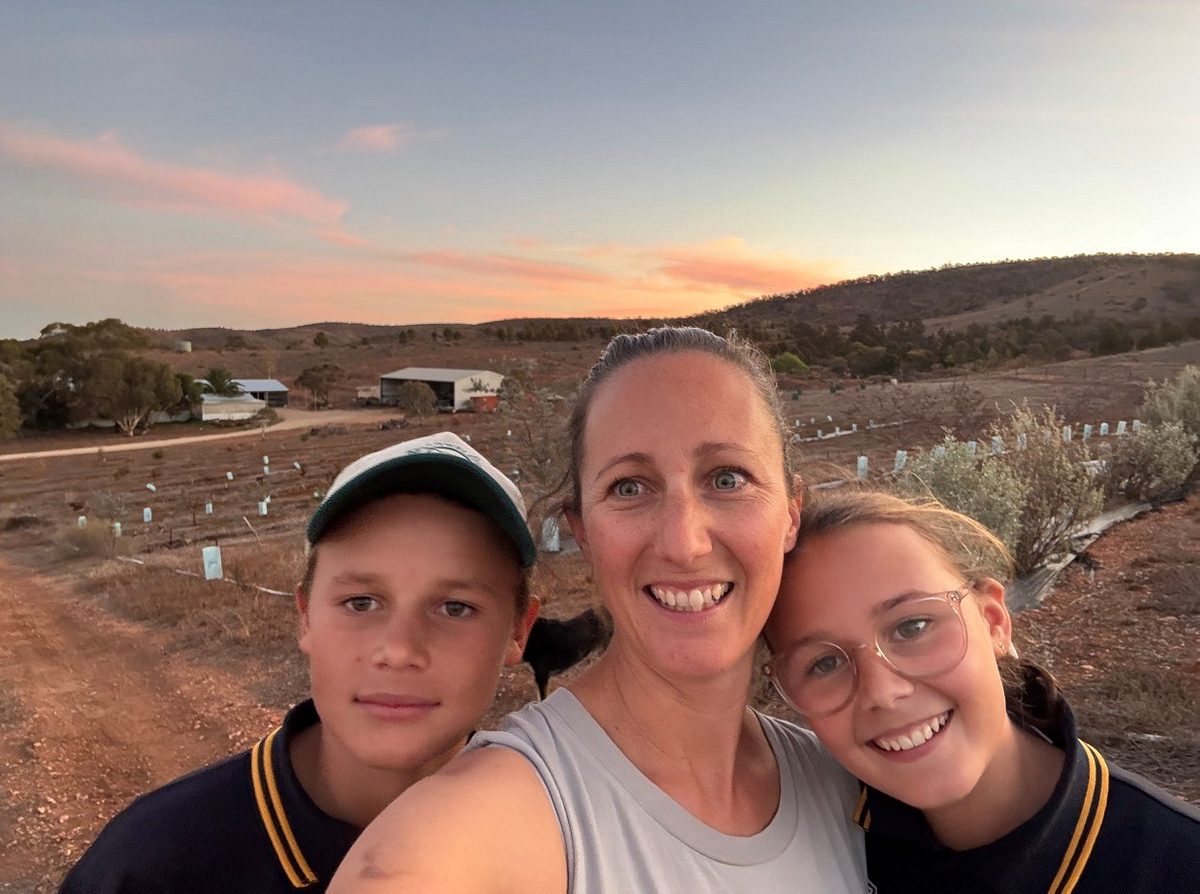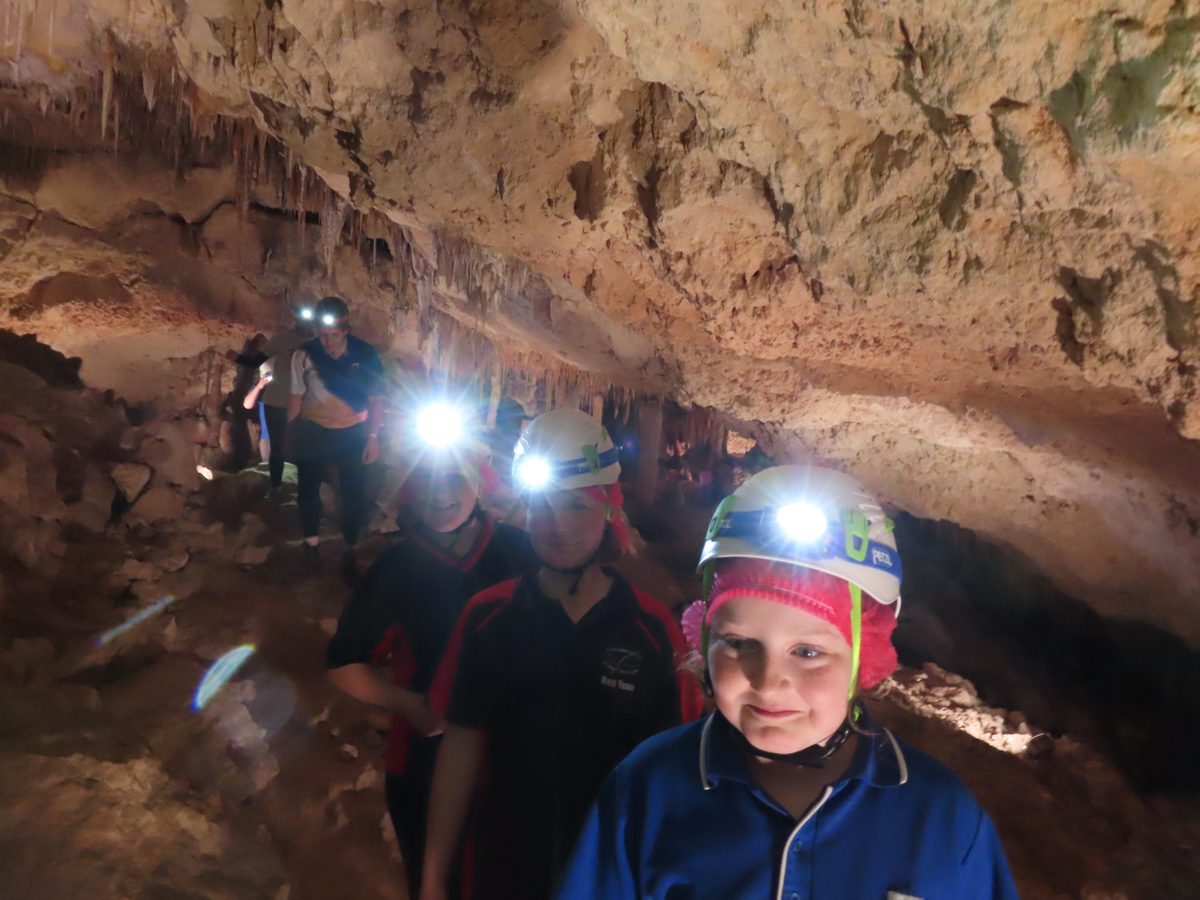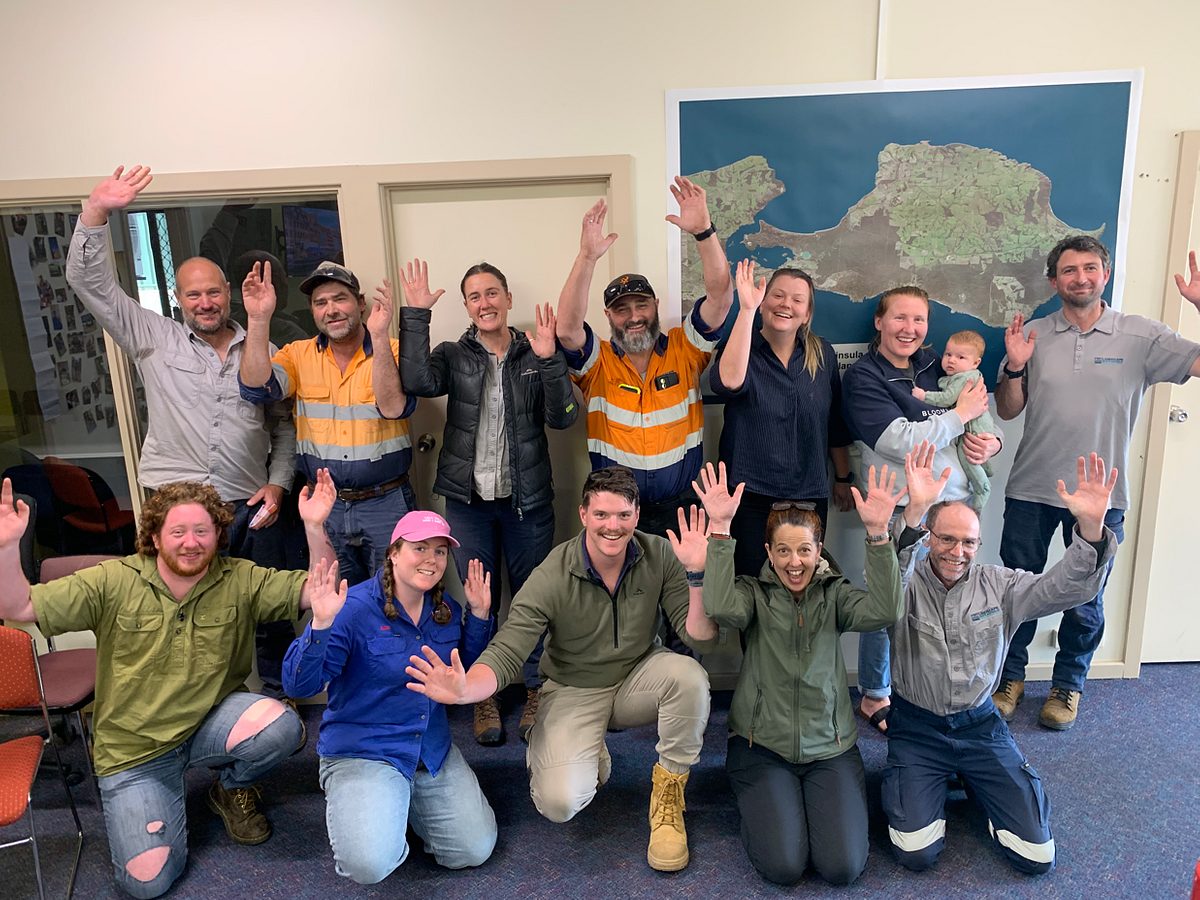'Grandicoot' day out for Young Environmental Leaders
On 25 March 2025, 25 Kangaroo Island Young Environmental Leaders (YEL) students learned about the nationally endangered southern brown bandicoot and why it is important to help conserve and protect this species, particularly in the event of a bushfire.

An initiative of the Murraylands Landscape Board and adopted for Kangaroo Island, the YEL program provides Year 5 students with an opportunity to learn about the local environment by participating in hands-on activities and projects while developing as leaders within their school community.
“Year 5 students from across Kangaroo Island Community Education three campuses helped install a series of newly designed artificial dens known as "bandicoot fire bunkers" within the Flinders Chase National Park, which have been specially designed to protect bandicoots in the event of a bushfire,” said Deb Laver, Kangaroo Island Landscape Board (KILB) Education Coordinator.

“The KI Landscape Board is very grateful for the support from the Burnside Rotary Club, whose volunteers with engineering backgrounds help design the bandicoot fire bunkers and then successfully applied for a Rotary District grant and sought sponsorship to cover the costs of materials” Ms Laver said.
“The Board is also grateful to SeaLink, who sponsored the delivery of the fire bunkers, AmiBlu Pipe Systems, CSR Hebel and AMES Australia Pty Ltd for donations of materials and to Burnside Rotary Club volunteers for coming to Kangaroo Island and helping to establish the first prototypes in the field,” she said.

Until the 2019/20 bushfires, very little was known about the population status of the southern brown bandicoot across Kangaroo Island.
The KILB has been conducting bandicoot surveys since 2020 to monitor the health of the marsupial population and, at the time, only found clusters of the species in unburnt sections of the landscape.
However, recent surveys in 2023 and 2024 reveal a decline in the population across all habitats in the landscape.
The cause of this decline in the population may be linked to the current dry conditions, the loss of habitat from the 2019/20 bushfires and predation by feral cats. Bandicoots feed on fungi and insects that may be more prevalent during wet conditions.
The southern brown bandicoot is quite a sizeable ground-dwelling marsupial, weighing approximately 1 kilogram and needing somewhere to den, such as thick vegetation low to the ground or fallen debris such as branches, with much of this habitat burnt out in the 2019/20 bushfires.
“With the help of YEL participants, the KILB are trying to recreate bunkers at five sites across the island for the bandicoots to den and make them fireproof in the event of another bushfire,” Ms Laver said.
The YEL kids loved getting their hands dirty, and unofficial mascot Garry the Bandicoot loves his new home.

“YEL provides unique opportunities for children to learn about, connect with, and respect their local environment,” Ms Laver said.
“Children participate in hands-on activities and projects, learning and practicing skills in leadership, communication and public speaking while visiting great locations across Kangaroo Island,” she said.
“The YEL program also creates a ‘ripple effect’ where students learn through hands on activities and then share their experiences back at school and with the wider school community.”
Kangaroo Island Community Education (KICE) Principal Peter Philp said YEL is a fantastic example of great collaboration to deliver environmental outcomes for the community involving great learnings for Kangaroo Island Community Education (KICE) students via hands-on, real-life activities.
“This has been achieved through the KI Landscape Board and KICE collaboration, which focusses on connecting Kangaroo Island kids and landscapes through an integrated environmental education program,” Mr Philp.
“This collaboration involves Deb Laver as the Environmental Coordinator, linking the Landscape Board, KICE (especially the students), community and the environment,” he said.
“Well done to all involved.”



